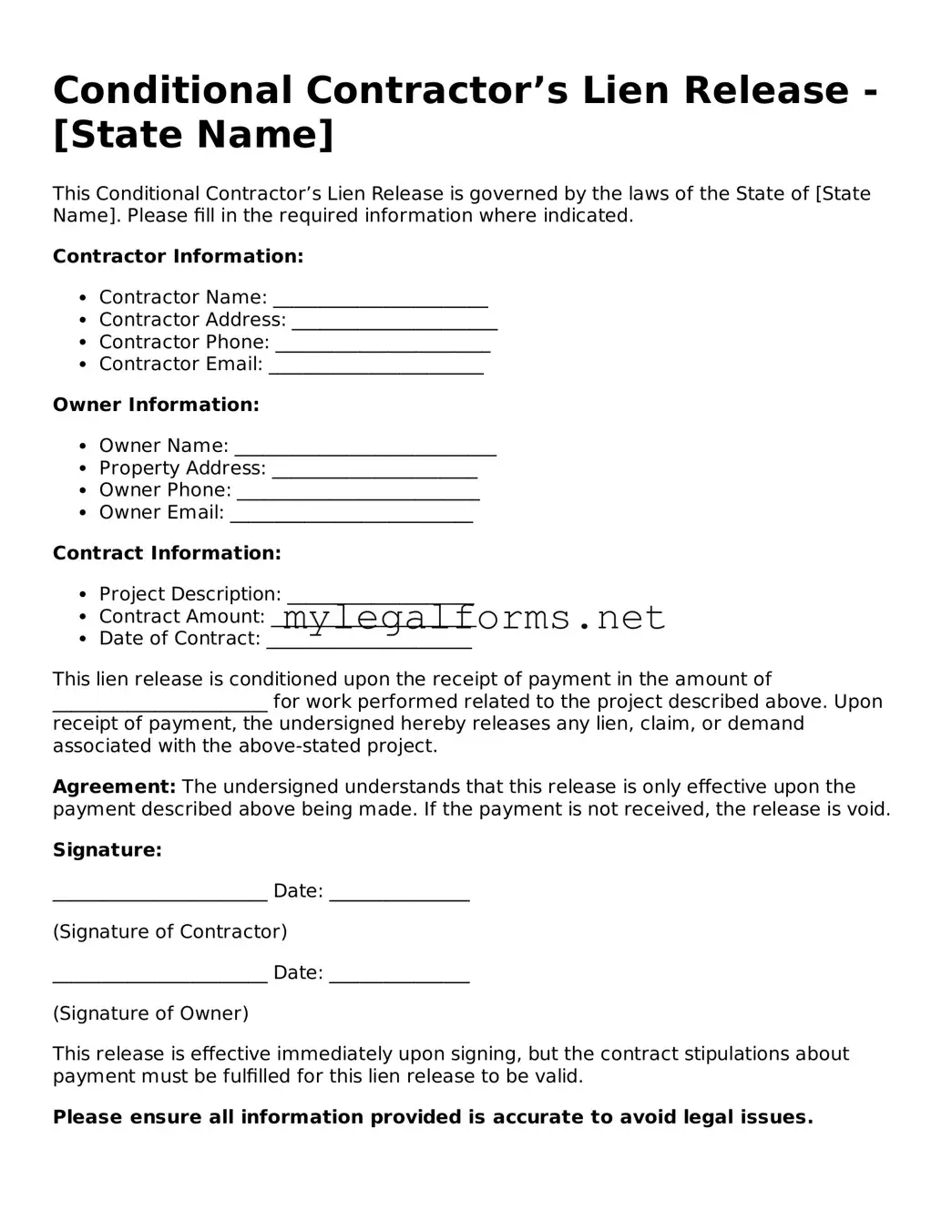Conditional Contractor’s Lien Release - [State Name]
This Conditional Contractor’s Lien Release is governed by the laws of the State of [State Name]. Please fill in the required information where indicated.
Contractor Information:
- Contractor Name: _______________________
- Contractor Address: ______________________
- Contractor Phone: _______________________
- Contractor Email: _______________________
Owner Information:
- Owner Name: ____________________________
- Property Address: ______________________
- Owner Phone: __________________________
- Owner Email: __________________________
Contract Information:
- Project Description: ____________________
- Contract Amount: ______________________
- Date of Contract: ______________________
This lien release is conditioned upon the receipt of payment in the amount of _______________________ for work performed related to the project described above. Upon receipt of payment, the undersigned hereby releases any lien, claim, or demand associated with the above-stated project.
Agreement: The undersigned understands that this release is only effective upon the payment described above being made. If the payment is not received, the release is void.
Signature:
_______________________ Date: _______________
(Signature of Contractor)
_______________________ Date: _______________
(Signature of Owner)
This release is effective immediately upon signing, but the contract stipulations about payment must be fulfilled for this lien release to be valid.
Please ensure all information provided is accurate to avoid legal issues.
